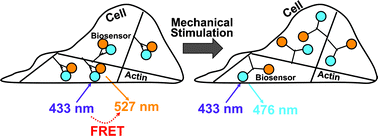FRET and mechanobiology
Abstract
Since the development of green fluorescent

Maintenance work is planned from 09:00 BST to 12:00 BST on Saturday 28th September 2024.
During this time the performance of our website may be affected - searches may run slowly, some pages may be temporarily unavailable, and you may be unable to access content. If this happens, please try refreshing your web browser or try waiting two to three minutes before trying again.
We apologise for any inconvenience this might cause and thank you for your patience.
* Corresponding authors
a
Departments of Bioengineering and Molecular & Integrative Physiology, Neuroscience Program, Center for Biophysics and Computational Biology, Institute of Genomic Biology, The Beckman Institute for Advance Science and Technology, University of Illinois at Urbana-Champaign, Urbana, USA
E-mail:
yingxiao@uiuc.edu
b
Department of Mechanical Science and Engineering, University of Illinois at Urbana-Champaign, Urbana, USA
E-mail:
nwangrw@illinois.edu
Since the development of green fluorescent

 Please wait while we load your content...
Something went wrong. Try again?
Please wait while we load your content...
Something went wrong. Try again?
 Fetching data from CrossRef.
Fetching data from CrossRef.
This may take some time to load.
Loading related content
